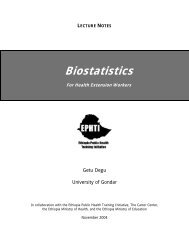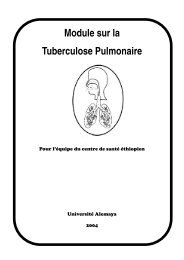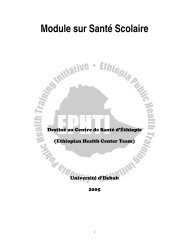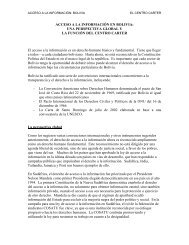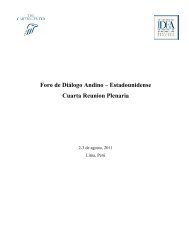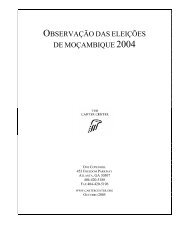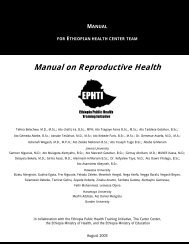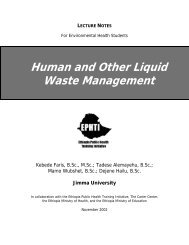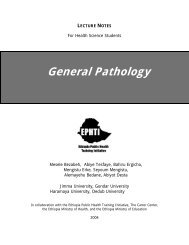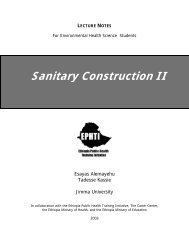Urinalysis - The Carter Center
Urinalysis - The Carter Center
Urinalysis - The Carter Center
You also want an ePaper? Increase the reach of your titles
YUMPU automatically turns print PDFs into web optimized ePapers that Google loves.
Contents of tablet<br />
<strong>The</strong> acetest tablet contains Sodium Nitroprusside (Nitroferricyanide),<br />
Glycine, and a strongly Alkaline buffer.<br />
D. Acetone Powder Test<br />
Procedure<br />
1. Place a small amount of acetone powder on a clean sheet of<br />
paper.<br />
2. Add three or four drops of urine.<br />
3. A purple color is a positive test for acetone and diacetic acid.<br />
Preparation of Acetone Powder Reagent (See Reagent Number 2)<br />
E. Ketostix, Rreagent Strip Test<br />
Procedure<br />
1. Dip test- end of the strip in urine<br />
2. At 15 seconds compare the color of dipped- end with the color<br />
chart.<br />
3. Report as indicated by the color chart.<br />
Contents of Reagent Strip<br />
It contains Sodium Nitroprusside, Glycine, and a strongly Alkaline buffer.<br />
In alkaline medium, acetoacetic acid (diacetic acid) and acetone react<br />
with nitroprusside in the presence of glycine to form a purple complex.<br />
Gerhardt's Test for Acetoacetate (Diacetic Acid)<br />
Gerhardt's test is specific for acetoacetate (diacetic acid); however it is<br />
capable of detecting only large amounts of acetoacetate. <strong>The</strong> test has<br />
been used as a means of determining the severity of ketosis. A positive<br />
result indicates severe ketosis, and treatment must be started<br />
53




